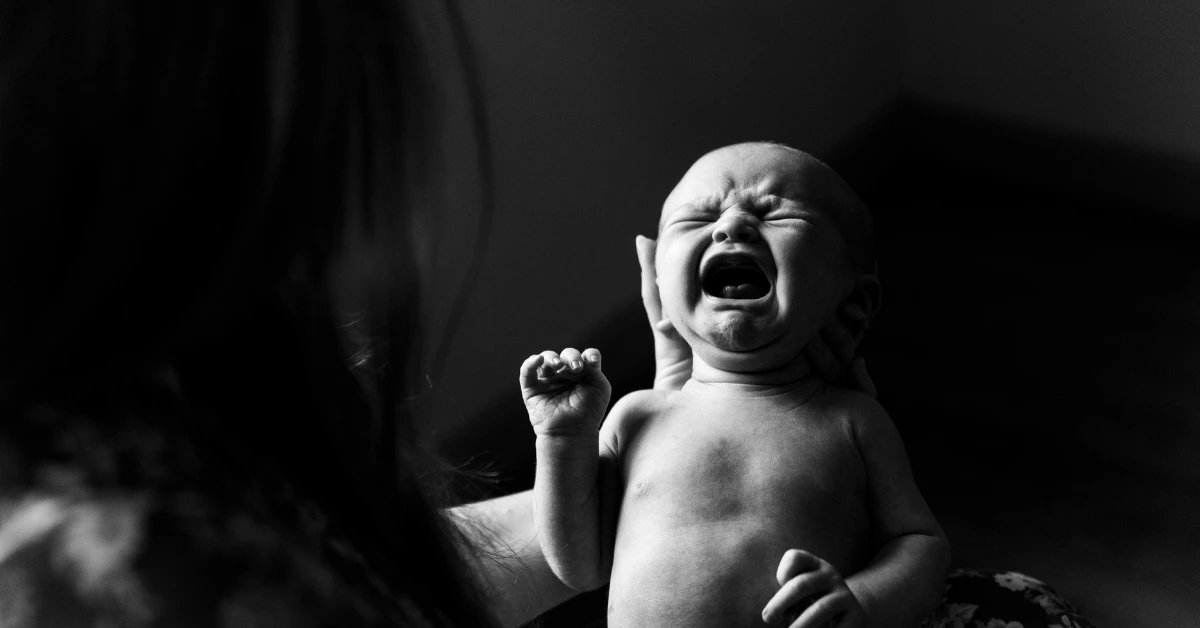Moro Reflex in Newborns and How to Make Nights Easier

The Moro reflex in newborns is one of those things no one really warns you about until you are staring at your baby in the middle of the night, wondering why they threw their arms up out of nowhere.
One second, they are sleeping peacefully, the next, they startle so hard it looks like they are falling.
I remember thinking I had made a mistake. Maybe I moved too quickly or made a noise. But this is a built-in reflex, and while it feels frustrating when you are already running on two hours of sleep, it is completely normal.
Table of Contents
What Is the Moro Reflex (Startle Reflex)
The Moro reflex, also called the startle reflex, is one of the survival newborn reflexes babies are born with. When your baby feels a sudden movement, a drop in support, or hears a loud noise, their nervous system reacts.
Their arms fling out wide, legs may stiffen, and then they pull everything back in like they are bracing themselves. It looks dramatic, but it is a normal part of development.
Common triggers for Moro reflex include:
- Laying your baby down too quickly
- Diaper changes or shifting positions
- Sudden loud noises like barking dogs, dropped objects, or siblings shouting
- Sleep cycle shifts
Think of it as your baby’s nervous system adjusting to life outside the womb.
When Does the Moro Reflex Go Away
The Moro reflex in newborns usually fades between three to six months. Some babies outgrow it earlier, others take a little longer. You do not need to fix it. Their nervous system matures naturally with time.
If your baby is still startling often past six months, it is worth mentioning to your pediatrician, but most of the time it resolves on its own.
How the Moro Reflex Affects Newborn Sleep
This reflex is one of the biggest reasons newborn sleep feels impossible in the early weeks. Your baby is not waking up because you are doing something wrong. Their body is reacting in a way that jerks them awake.
You finally get them down, and minutes later, their arms fling out, legs kick, and their eyes open wide. That is the Moro reflex interrupting sleep.
How to Reduce the Moro Reflex
Other things that may help:
- Laying them down slowly with head, neck, and back supported
- Holding them a bit longer before transferring to the crib
- Using white noise to block sudden sounds
- Keeping nighttime changes calm and quiet
These do not erase the reflex, but they can make it less disruptive.
When the Moro Reflex Seems Too Strong
Some babies react like they have been dropped suddenly. Their arms shoot out fast, their whole body tenses, and it can look intense. This is usually still normal, especially if they are overtired or sensitive that day.
You should talk to your doctor if:
- The reflex only happens on one side
- Your baby seems very stiff or unusually floppy
- Startle responses continue well past six months
Most of the time, it is simply part of development and nothing serious.
What If Your Baby Does Not Have the Moro Reflex
Not all babies have a big reaction. Some barely twitch. Others only startle when tired or surprised. If your baby prefers contact naps or being held close, you may not notice it much.
If something feels off or your baby seems generally unresponsive, it is always best to check in with a doctor. In many cases, the reflex either has already passed or is happening in subtle ways.
This Is Not Your Fault
The Moro reflex is not caused by how you hold your baby or how you put them down. It is not something you can prevent.
Babies are born with reflexes that fade as they grow. The Moro reflex is one of them. Your role is to support them through it until it disappears.
Frequently Asked Questions
What is the Moro reflex in newborn
The Moro reflex, also called the startle reflex, is an automatic response that babies are born with.
When a newborn feels a sudden movement, a change in support, or hears a loud noise, their arms fling out wide, and their legs may stiffen.
Then they pull everything back in like they are bracing themselves. looks dramatic, but it is a normal reflex showing your baby’s nervous system is adjusting to life outside the womb.
When does the Moro reflex go away
Most babies outgrow the Moro reflex between three to six months. Some may stop startling earlier, while others take a little longer.
The reflex fades naturally as your baby’s nervous system develops and they gain more control of their movements.
If your baby continues to have strong startle responses past six months, it is a good idea to bring it up with your pediatrician.
What triggers the Moro reflex
The Moro reflex can be triggered by sudden changes that make a baby feel insecure or startled.
Common triggers include laying them down too quickly, shifting positions, or diaper changes. Loud noises or sudden movements in the room can also set it off. Even sleep cycle transitions can set it off.
These triggers are normal, and while you cannot prevent them completely, you can reduce them by moving slowly. Using white noise and keeping the environment calm can also help.
Is the Moro reflex normal or abnormal
The Moro reflex is completely normal in newborns and shows that their nervous system is functioning. It only becomes a concern if the reflex is absent, happens only on one side, or continues strongly past six months.
In those cases, it could point to an abnormal Moro reflex or another neurological issue that should be checked by a pediatrician. For most babies, even strong startles are simply part of healthy development.
How can I reduce or stop the Moro reflex
You cannot stop the Moro reflex, but you can reduce how disruptive it feels.
Swaddling in the first weeks, supporting their head and back while laying them down, and holding them until they are in a deeper sleep can help.
White noise also prevents sudden sounds from startling them awake. The reflex fades on its own, so your role is to make sleep and transitions gentler until it disappears.
What if my baby does not have the Moro reflex
Not all babies show the Moro reflex strongly. Some have mild startle reflexes that are easy to miss, especially if they prefer being held or nap on your chest.
If your baby seems responsive, alert, and is developing normally, there is usually no issue. However, if you never see a startle response at all and your baby seems unusually still or unresponsive, bring it up with your doctor for reassurance.
What does it mean if the Moro reflex is too strong
A strong Moro reflex can look intense, with arms flinging out quickly and the whole body tensing. This is usually still normal, especially when babies are overtired or highly sensitive.
It only becomes concerning if the reflex appears one-sided or continues well past six months. If it is paired with stiffness or floppiness in the body, it should be checked by a pediatrician. In those situations, it is best to discuss it with your pediatrician.
One Last Thing...
The Moro reflex can feel overwhelming when you are living through it, especially when it keeps breaking up what little newborn sleep you get. But it will not last forever.
Eventually, you will put your baby down, and they will stay asleep without the sudden arm throws or jerks.
Until then, remind yourself that this is normal, it is temporary, and you are not doing anything wrong.


